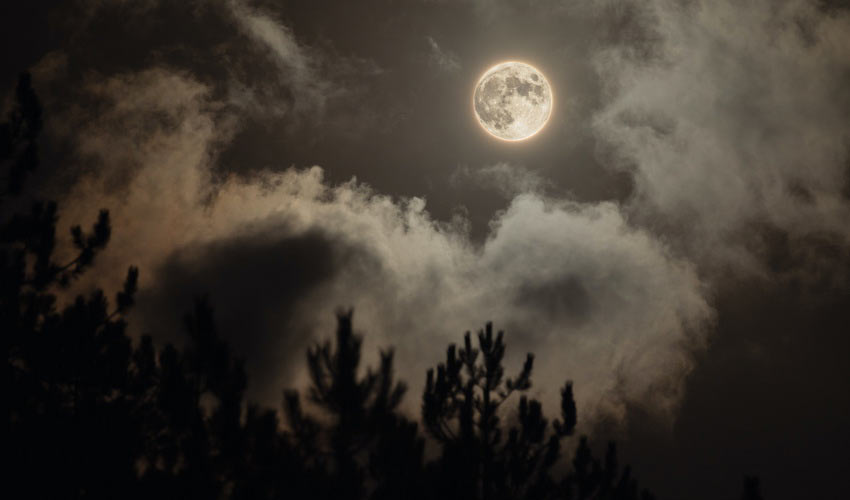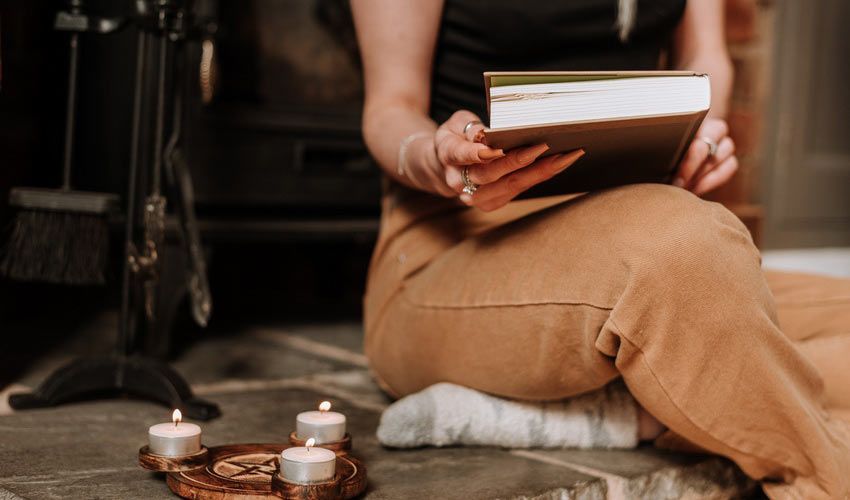Veiling the Eerie Enigma - Haunting Secrets of Banshees Unveiled
Once upon a time, in the mystical land of Ireland, there existed a terrifying creature known as the Banshee. Legend had it that she was a harbinger of death, a ghostly being whose chilling wails could send shivers down your spine. The Banshee was deeply rooted in Irish mythology and became a symbol of both fear and fascination. According to ancient tales, the Banshee was thought to be a descendant of the Tuatha Dé Danann, a mythical race of supernatural beings. They were believed to be fairy-like creatures, blessed with unique gifts, but cursed in their immortality. The Banshee, in particular, had an eerie purpose - to forewarn the imminent demise of select individuals.
The Banshee, whose name derived from the Irish term "bean sí," meaning "woman of the fairy mound," often appeared as a dishevelled old woman, clad in a flowing silver robe, with long unkempt hair cascading down her back. Her haunting visage was pale, and her eyes glowed like orbs of spectral light. Though she seemed frail and fragile, her ethereal beauty was undeniable. The legend of the Banshee foretold that her blood-curdling screams could be heard across the land on certain moonlit nights. These piercing shrieks were said to echo through the valleys, waking the unfortunate souls who would soon meet their untimely end. Families across Ireland well knew the dread of those wails, for they heralded imminent death.

Many believed the Banshee to be an omen of doom, called forth by the Morrigan – the shape-shifting goddess of war and death. It was said that this ethereal being could take on various forms, frequently manifesting as a crow or raven, observing her prey from high above before delivering the news of impending tragedy. Despite her fearful reputation, the Banshee was not an evil creature. Instead, she was seen as a grieving spirit, mourning the loss of her loved ones. Her mournful cries were believed to be expressions of sorrow and an attempt to share the weight of the impending bereavement.
In many Irish households, the arrival of the Banshee's screams ignited a flurry of rituals. Families would gather to light candles and recite prayers, hoping to calm the tormented Banshee's spirit and alleviate any suffering she endured. It was believed that by acknowledging her presence and offering condolences to her grieving heart, one could ease their own grief. Throughout history, countless stories emerged, forever linking the Banshee to tragic events. She was known to visit castles and estates frequented by noble families, her cries reverberating through the chambers as a forewarning of a prominent person's death. The Banshee was said to wail louder and more sorrowfully for figures of great importance, such as kings or revered warriors.
Generations passed, and as Ireland changed, so did the tales of the Banshee. Her presence became less frequent, her cries fewer and farther between. Yet, even today, whispers of her existence can be heard in hushed conversations, oral traditions passed down from one generation to the next. The Banshee, a spiritual reminder of life's fleeting nature, continues to be a source of fascination. In modern times, she has transcended folklore and become an emblem of Celtic culture, adorning art, literature, and popular culture. Her haunting beauty and mysterious nature have captivated the imagination of many, immortalising her as a timeless figure in mythology.

So, the Banshee's legacy lives on, her spectral presence, forever intertwined with the very fabric of Irish mythology. And though her wails may still send chills down the spine, always remember that she is not merely a bringer of death and despair, but a timeless reminder of the preciousness of life itself.
A Banshee Tale - The Legend of Siobhan
Once upon a time in a small village nestled in the heart of Ireland, there lived a young woman named Siobhan. She was known for her radiant beauty, but also for her kind and gentle nature. Siobhan was beloved by all who knew her, capturing the hearts of both the young and old with her warm smile and gracious spirit. One fateful night, as the moon bathed the village in a soft glow, a chilling wind blew through the streets. Unbeknownst to the villagers, this wind carried with it a mournful cry that echoed through the air. It was the mournful wail of the Banshee, an otherworldly spirit said to bring a foreboding message.
As the enchanting sound grew louder, Siobhan became aware of the ominous presence. Her heart raced as a sense of unease washed over her, but being brave at heart, she decided to follow the eerie cry. Guided by an inner curiosity, Siobhan followed the sound until she found herself standing before an ancient oak tree, its gnarled branches reaching out like skeletal fingers against the moonlit sky. Gathering her courage, Siobhan approached the tree cautiously. There, under its sheltering branches, the Banshee materialised before her eyes. She was a beautiful and ethereal creature, with long, flowing silver hair cascading down her ghostly white gown. Her eyes, filled with sorrow and wisdom, locked with Siobhan's gaze.
But instead of the expected terror, Siobhan was filled with an overwhelming sense of empathy for the Banshee. She could sense the pain and despair emanating from the spirit, and a deep understanding filled her heart. Siobhan learned that Banshees are not merely bringers of death, but ancient guardians tasked with carrying the souls of departed loved ones to the afterlife. As she stood before the Banshee, Siobhan felt a nameless dread—a premonition of her own impending death. Yet, she remained steadfast and resolved to help the Banshee fulfil her sacred duty. The Banshee, sensing Siobhan's compassion, stretched out her hand and touched Siobhan's cheek softly.
With this touch, Siobhan was granted the gift of foresight. She could now foresee the tragic misfortunes that would befall her loved ones, and in turn, the Banshee would guide their souls peacefully towards the afterlife, sparing them agony and suffering. Days turned into weeks, and weeks turned into months, as Siobhan acted as the Banshee's vessel, receiving visions of her loved ones' deaths. Each time, she felt a profound sense of helplessness, knowing she could not intervene to change their fate. But through it all, Siobhan remained resolute, embracing her destiny as the link between the mortal world and the ethereal realm.

Although filled with sorrow and mourning, the village came to understand the significance of Siobhan's sacred connection with the Banshee. They celebrated her as a guardian of the departed, a bridge between the living and the dead. Through Siobhan's sacrifices, families were granted closure, and their loved ones could find peace in the afterlife. One quiet evening, after guiding the last soul whose life she had foreseen, Siobhan found herself standing once more beneath the ancient oak tree. This time, however, there was no Banshee to greet her. Instead, a sense of tranquil stillness filled the air as Siobhan breathed in the serenity that surrounded her.
She knew that her own time had come, her fate sealed long ago when she accepted her role as the banshee's vessel. As Siobhan closed her eyes for the final time, the wind gently swirled around her, carrying her essence away and uniting it with the banshee. Together, they would continue to guide souls on their final journey throughout eternity. And so, the legend of Siobhan, the compassionate guardian of the Banshee, lived on in the hearts and minds of the village. Her selflessness and unwavering dedication to easing the transition between life and death left an indelible mark on the souls she touched. And as the wind whispered through the trees, it carried with it memories of Siobhan, who forever intertwined the mortal and ethereal realms.
“The Chattering Season” by Stewart Stafford
Hear a fearsome banshee's wail,
From a dank bog or Celtic dale,
Like the pulling of the rat's tail,
In the whistle of a thrashing gale.
In this skittish son of Mc's room,
A death knell tolls out his doom,
A cursed shadow now does loom,
Her spirit bride's unwilling groom.
The stark evening's grim messenger,
She's a maelstrom's fatal passenger,
Howls from last breath's harbinger,
No dowry for this eternal dowager.
© Stewart Stafford, 2022. All rights reserved. - Stewart Stafford






















